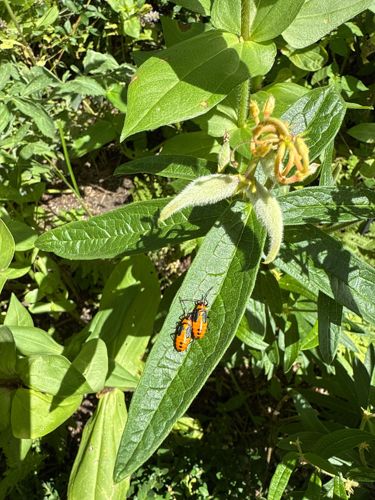Boxelder Bug
Scientific Name: Boisea trivittata
Order & Family: Hemiptera, Rhopalidae
Size: Approximately 1/2 inch (12-14 mm) in length.

Natural Habitat
Boxelder bugs are found wherever their host trees (boxelder, maple, ash) are present. This includes urban, suburban, and rural areas. During late summer and fall, they are often found congregating on the sunny sides of buildings, rocks, and trees.
Diet & Feeding
Boxelder bugs primarily feed on the seeds and leaves of boxelder trees (Acer negundo), as well as other maple (Acer spp.) and ash (Fraxinus spp.) trees. They use their piercing-sucking mouthparts to extract sap from these plants. They are not typically destructive to the trees themselves, though heavy feeding can cause some leaf distortion.
Behavior Patterns
Boxelder bugs are gregarious, often found in large aggregations, especially during cooler weather. They overwinter as adults in protected places like leaf litter, under bark, or inside homes if they find entry. They become active in spring, feeding and reproducing. Nymphs hatch from eggs laid on host trees and progress through several instars before becoming adults. In late summer and fall, they aggregate on the sunny sides of trees and buildings before seeking overwintering sites.
Risks & Benefits
Potential risks include being a nuisance pest when they enter homes in large numbers to overwinter. They do not bite or sting, but they can excrete a reddish-orange fluid that can stain curtains, furniture, and walls. They are not known to transmit diseases. From an ecological perspective, they are part of the food chain, serving as a food source for birds and other predators. They are generally not considered beneficial for agriculture or gardens, but their impact on host trees is usually minor.
Identified on: 8/25/2025